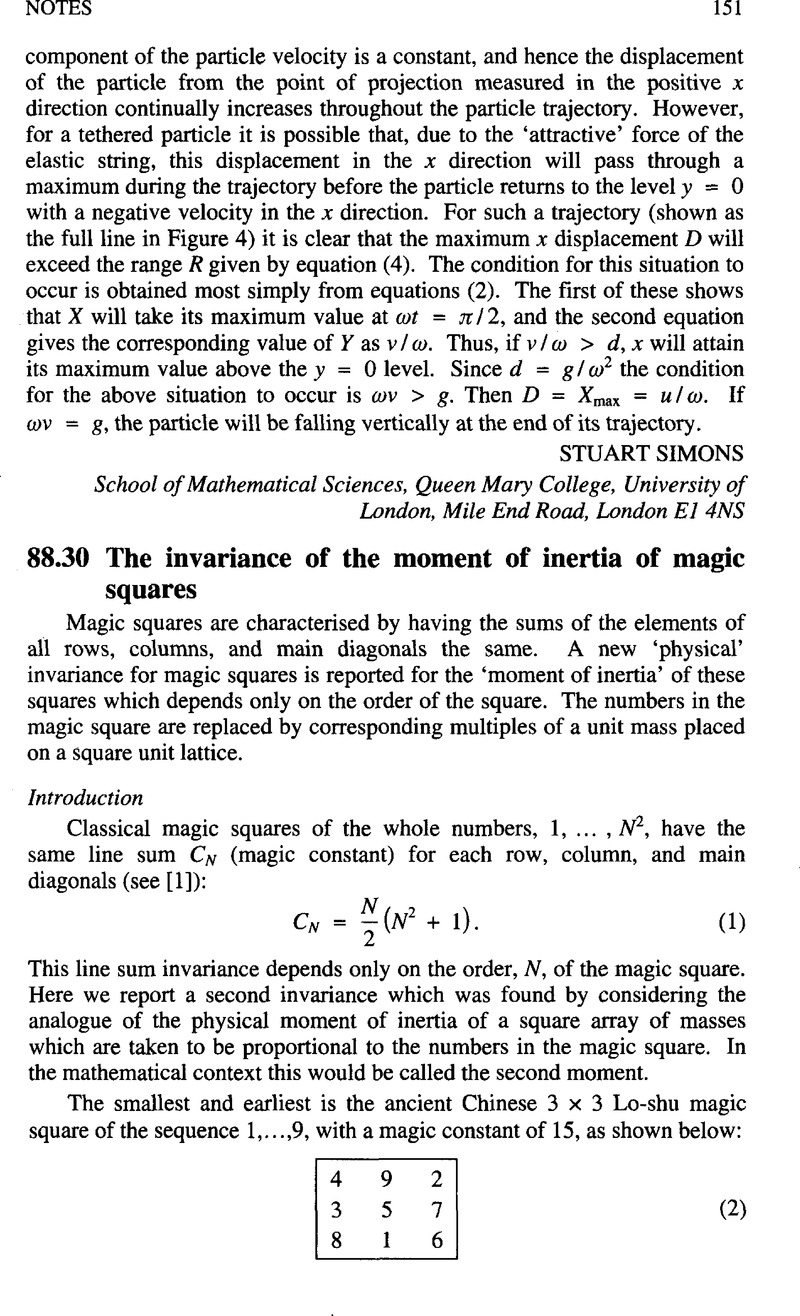Crossref Citations
This article has been cited by the following publications. This list is generated based on data provided by Crossref.
Rogers, Adam
and
Loly, Peter
2004.
The inertia tensor of a magic cube.
American Journal of Physics,
Vol. 72,
Issue. 6,
p.
786.
Rogers, Adam
and
Loly, Peter
2005.
The electric multipole expansion for a magic cube.
European Journal of Physics,
Vol. 26,
Issue. 5,
p.
809.
Loly, Peter
Cameron, Ian
Trump, Walter
and
Schindel, Daniel
2009.
Magic square spectra.
Linear Algebra and its Applications,
Vol. 430,
Issue. 10,
p.
2659.
Fahimi, Peyman
Toussi, Cyrus Ahmadi
Trump, Walter
Haddadnia, Javad
and
Matta, Chérif F.
2021.
Striking patterns in natural magic squares’ associated electrostatic potentials: Matrices of the 4th and 5th order.
Discrete Mathematics,
Vol. 344,
Issue. 3,
p.
112229.
Fahimi, Peyman
2024.
Binary color-coded magic squares: A study of uniqueness under rotation/reflection, PCA, and LDA analysis.
Discrete Mathematics,
Vol. 347,
Issue. 1,
p.
113708.





